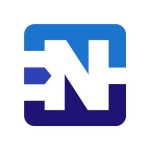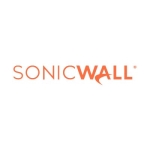What is our primary use case?
We are primarily using the solution for VLAN implementations and also for remote VPN capability - basically it's used for connecting to remote offices securely.
How has it helped my organization?
After implementing tools, including Cisco ASA, unauthorized access comes down a lot. We are not facing asset issues as of now. We are not facing an issue related to malicious traffic or any bad activity in our network.
What is most valuable?
The solution can allow and block traffic over the VLANs.Some of the unauthorized actions and malicious traffic can also be blocked effectively, as we are following PCI DSS compliance. We are a card industry. We are using cards as a payment method, and therefore we need to follow the compliance over the PCI DSS. That's why we chose one of the best products. ASA Firewall is very secure.
It's always easy to integrate Cisco with the same company products. If you are using other CIsco products, there's always easy integration.
Cisco is one of the most popular brands, and therefore the documentation is easily available over the internet.
They are best-in-class.
The remote VPN feature is one of the best features we've found.
We like that there is two-factor authentication on offer. We can integrate a Google authenticator with Cisco ASA so that whenever a person is logging on to any network device, they need to enter the password as well as the security code that is integrated by Google. It's a nice added security feature.
Cisco ASA provides us with very good application visibility and control. The Cisco CLI command line is one of the easiest we found on the market due to the fact that the GUI and the user interface are very familiar. If you're a beginner, you can easily access it. There's no complicated UI.
When compared to other products available, the cost is pretty similar. There's no big gap when you compare Cisco pricing to other products.
There are multiple features in a single appliance, which is quite beneficial to us.
Support that is on offer 24/7. Whenever we face some technical issue, we can reach out to them easily.
We have not had any security breaches.
They provide a helpful feature that allows us to configure email.
We are getting a lot from the appliance in real-time.
What needs improvement?
There's an upgraded version of the 5500 that has come to the market. It offers the latest encryption that they have. If they want to add better features to the current Cisco ASA, they can start by increasing the encryption. That is the only thing they need to improve. The rest is good.
For how long have I used the solution?
We've been using the solution for about five or more years at this point. It's been a while.
What do I think about the stability of the solution?
The stability and availability are very good. there are no bugs or glitches. It doesn't crash or freeze. it's a reliable solution.
What do I think about the scalability of the solution?
We have it in our infrastructure for around 15 plus users, including Fortinet sites.
We have found that whenever the traffic spikes at peak times, the product automatically scales up to the requirement. We have also implemented the single sign-on it, and therefore, it automatically scales up. We haven't felt any limitations. Currently, we are using it for 1500 plus users. At any given time, there are around 700 plus users available in the office. It's a 24/7 infrastructure. We have tested it for up to 750 plus users, and it's perfectly fine.
How are customer service and technical support?
Technical support is excellent. they are always available, no matter the time of day, or day of the week. We are quite satisfied with their level of support. They are quite helpful and very responsive. I'd rate them at a ten out of ten. They deserve perfect marks.
Which solution did I use previously and why did I switch?
We did not previously use a different solution. When the office was launched we implemented Cisco as a fresh product.
We are using a Cisco ASA Firewall, as well as Sophos at the remote sites. We are using another product is for log collecting. There are three solutions that basically cover us for security purposes. Those, at least, are the physical devices we are using as of now. The rest are cloud solutions such as Nexus.
That said, I personally, have used Sophos XG as a firewall in the past. Sophos is good in terms of traffic blocking and identifying interruptions to the traffic. The features are better on Cisco's side. For example, there is two-factor authentication and a remote VPN. The only benefit I found in Sophos was the way it dealt with the traffic.
How was the initial setup?
The initial setup was not overly complex or difficult. It was quite straightforward and very easy to implement.
Deployment takes about 20 to 25 minutes.
In terms of the implementation strategy, at first, we put up the appliances in the data center. After that, we connected it with the console. After connecting the console, we had an in-house engineer that assisted. Cisco provided us onboarding help and they configured our device for us. We have just provided them the IP address and which port we wanted up. Our initial configuration has been done by them.
What about the implementation team?
While most of the setup was handled in-house, we did have Cisco help us with the initial configurations.
What was our ROI?
The ROI we are getting from Cisco ASA is higher availability, which we are getting all the time. On top of that, it's good at blocking traffic and protecting us from cyber-crime issues.
What's my experience with pricing, setup cost, and licensing?
The pricing is pretty reasonable. it's standard and comparable to other solutions. The maximum difference between products might be $20 to $40. It's not much of a difference.
Which other solutions did I evaluate?
We did not evaluate other solutions. We trust Cisco. It's a very good product and well known in the market.
What other advice do I have?
We are a customer and an end-user.
We are using physical Cisco appliances.
We use a lot of Cisco products, Cisco router (the 3900-series routers), and Cisco switches.
In the next quarter, we will implement SD-WAN. Once the SD-WAN is implemented, then we will go with an automated policy and DNS kinds of tools. We are in the process of upgrading to Cisco ASA Firepower in the next quarter. We have not integrated Cisco ASA with Cisco's SecureX solution.
I'd recommend the solution, especially for medium-sized or larger companies and those who are looking for long-term solutions (for example those with a user base of around 2,000 plus users in and around 20 plus applications). It's reliable and offers users a lot of features. This helps companies avoid having to rely on other third-party solutions.
If you are new to Cisco, you should take advantage of the education they have on offer. Cisco provides access to training and it's worth taking advantage of this.
Overall, I'd are the solution at a nine out of ten.
Which deployment model are you using for this solution?
On-premises
Disclosure: My company does not have a business relationship with this vendor other than being a customer.













